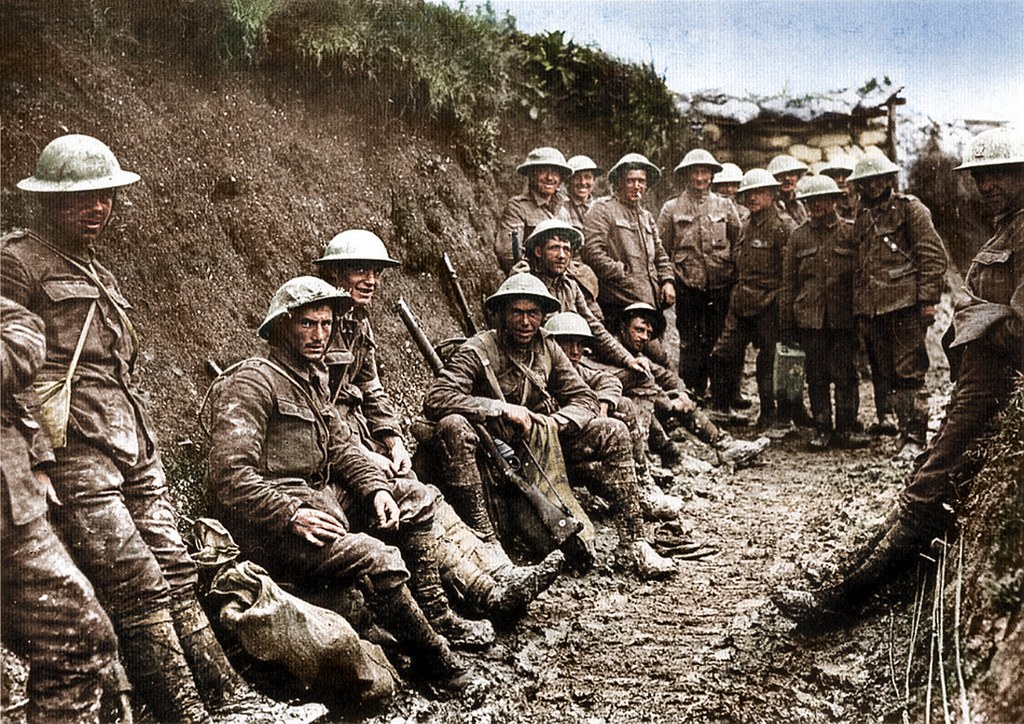When people refer to “the war,” they are normally referring to one they or their parents participated in; World War Two, the Korean War, Vietnam, etc. But when they refer to “The Great War,” there is only one that fits the title. The First World War spanned 1914 to 1918, with the US joining in mid 1917. This March marks the 106 year Anniversary of the Second Battle of the Somme.
In WWI, the two sides were not much different than WWII, with a few exceptions. The Central Powers were mainly Germany, Austria-Hungary, and Turkey. The Allies were France, Great Britain, Russia, Italy, Japan, and eventually the US in 1917.
We got involved after the “Zimmerman Telegram” to Mexico was intercepted, which was a letter from Germany asking Mexico to invade the US so they wouldn’t enter the war. If the US entered the war, the Central Powers would almost certainly fall against the Allies, which they eventually did in 1918. But before the Americans could get into Allied trenches, the Central Powers launched a massive attack to wipe out the Allies’ fortifications, which was partially successful. The Germans used artillery (look at my article on the Battle of Anzio to be filled in on artillery and other likewise weapons) and gas attacks to weaken the already battered British before the attack in a dense smog. Unlike any war before, both sides used different gasses to weaken or even kill the enemy without even firing a shot. These gasses would irritate the skin, burn the eyes, badly blister the lungs and throat, and more. Every soldier was equipped with a gas mask to save themselves, but the gas would still reach the skin and badly blister and burn every inch it touched.
The downfall to the German attack is that these new trenches and positions did not give Germany the strategic advantage it wanted. It did, however, split the communication between the French and the British. The Germans kept pushing forward until March 28, where the Allies had regrouped enough to hold the Germans where they were. This was the single largest territorial gain since the beginning of the war in 1914, spanning about 40 miles. It also gave the Central Powers about 70,000 prisoners. This fight was not very advantageous to the Central Powers, as they were really just using the last of their resources to gain land that would be gained back shortly. They never broke through the Allied line, only bent it. Like the Battle of the Bulge in WWII, the lines never actually separated. They just retreated enough to give them the advantage again to hold off the attack they knew was coming, which happened on March 28.
The Second Battle of the Somme was arguably pointless for the German perspective. First of all, it gave no tactical or strategic advantage to the Central Powers and only used more of their very limited resources they had left. Remember, there were 4 years of fighting before this and towards the end, the losing side had less and less resources at their disposal as the Allies shut down their factories and cut off their supply lines. But in the end, the Allies won the war with the Central surrender on the eleventh hour of the eleventh day of the eleventh month (11 November 1918). This day is known as Armistice Day. If you would like a visual representation for this Armistice, here’s a short film on the last minutes of WWI: END OF WAR- The Final Minutes of WWI.
So next November, remember to pay your respects to those who fought over 100 years ago. They rarely get attention today, so let’s strive to change that. WWI is just as important in American History as the Civil War, WWII, the Revolution, and every other conflict we’ve been a part of. It’s time we recognize it as such.

